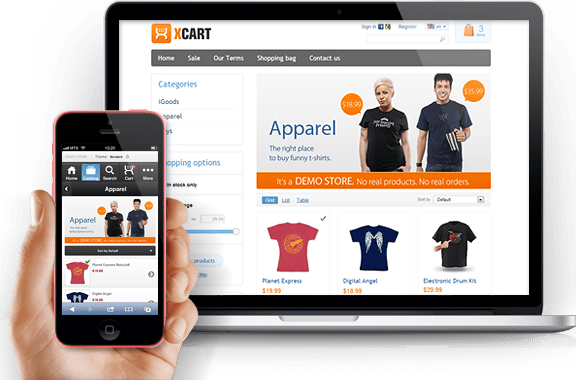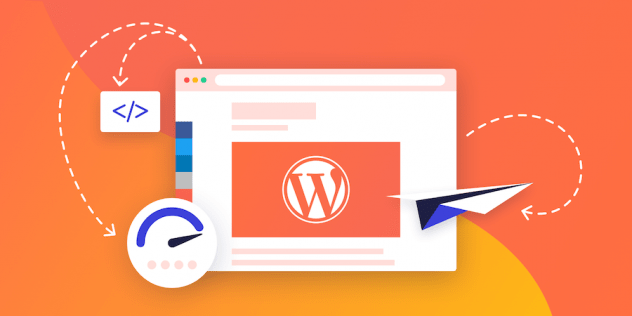- May 3, 2019
- Innomax
- 0

Getting an e-commerce website developed alone is not sufficient.
To succeed in the e-commerce business, your website must be able to fetch more sales & generate more revenue for you.
But the question that most e-commerce entrepreneurs ask is “How should I measure the performance of my e-commerce store?”
Well, there are certain metrics that you must observe in order to measure the performance of your online store.
In this blog post, we will be sharing 18 such metrics. These metrics are listed under sales & marketing headings.
Let’s dive in.
Marketing Metrics For E-Commerce

#1 Average Position
The average position gives you an insight into the ranking of your e-commerce website on search engines. This is perhaps one of the most important marketing metrics that must be measured regularly.
#2 Bounce Rate
Bounce rate refers to the number of visitors who left your website or blog just after viewing one page.
The bounce rate means your e-commerce website needs some improvement in order to retain visitors. Perhaps, it may be time to redesign your website.
Or, you may hire a web designer to improve some of the visual elements of your e-commerce store.
#3 CTR
CTR (Click Through Rate) is calculated by dividing the total number of impressions by the total number of clicks.
This figure reveals the effectiveness of your meta tags (if CTR is calculated for search engines) or email opening rate (if CTR is calculated for email marketing campaigns).
#4 Initiated Chat Sessions
If you have incorporated a live chat option with your e-commerce store, then this metric is going to be very useful for you to determine how many people notice and initiate the chat with you.
Wondering how much it costs to integrate a live chat option on any website? It’s free.
Yes, ask your web developer now to implement this feature on your e-commerce store to get more sales & customer engagement.
#5 New Vs Returning Visitors
Is your e-commerce website attracting new users or only existing users are buying from you again and again? Perhaps, there is no repeated selling on your e-commerce store, which is again a concern to think upon.
#6 Average Session Duration
How much time a user spends on your website is very important to observe if you want to know whether your e-commerce website is attracting users or not.
#7 Blog Traffic
If your e-commerce website has a blog, it would be useful to know whether it’s attracting traffic or not. It will help you to modify your blogging strategies.
Don’t you have a blog yet? Go for it. A blog can make a huge impact on your overall e-commerce sales.
#8 Website Traffic
This is pretty straightforward. How much traffic does your website receive from various sources like SEO, PPC, etc.
#9 Social Media Engagement
Do your social media posts get engagement? Or nobody seems to be interested in what you have been posting so far? Maybe it’s time to change your posting strategies.
#10 Likes & Following
Is your targeted audience liking & following your brand on Facebook, Twitter & Instagram? If yes, then what works best for more engagements. Maybe you need to focus on a few rather than diversifying.
#11 Traffic Source
Which source is bringing the maximum traffic to your e-commerce website? This metric is very important because it enables you to decide which traffic source(s) you need to focus on more.
#12 Time Spent
How much time does an average user spend on your e-commerce store? If the average time spent on your website is too low, then you need to think about revamping your website.
Or perhaps, refining a few elements on your website may work well too. If you have a low budget to redesign your website, you may consider hiring affordable web developers in India.
Sales Metrics For Your E-Commerce Website

#13 Conversion Rate
Conversion rate is derived by the total number of visitors on your website divided by the total number of sales. This metric will show you whether your investment is returning any returns or not.
#14 Average Order Size
What’s the average order size on your e-commerce website? If it’s too low, you may consider adding some of the up-selling & cross-selling features that will help you to increase the order size per customer.
#15 Cart Abandonment Rate
How many users are adding the products to their cart and how many of them finally pay.
Cart abandonment is generally caused because of fewer payment options available, shipping surcharge that’s shown on the final payment page, or some bug on the website. There could be more reasons as well.
#16 Customer Lifetime Value
If you are selling a product that’s required by your customers regularly, like magazines, regular medicines, etc., you need to focus more on the customer’s lifetime value, rather than just one sale.
#17 Customer Acquisition Cost
How much cost does it require to acquire a customer? Is this cost above your marginal profit?
If your customer has a high lifetime value, then you must not compare your customer acquisition cost with the marginal profit of your products. A customer’s acquisition cost may be higher than the marginal profit of your product, but if you add up the lifetime value of your customer, you may earn even higher profits.
#18 Total Sales
How much are the total sales on your e-commerce website? This figure is too important to derive your turnover. If your web developer has used WordPress to build your e-commerce, then you can fetch this report in less than 2 minutes.







